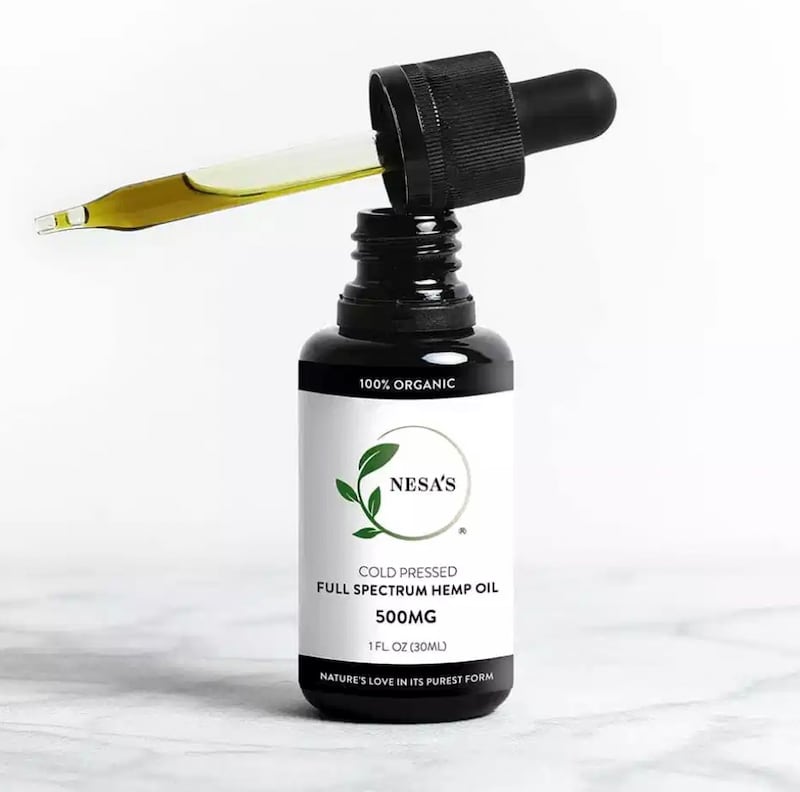New research may have discovered that hemp compounds have the potential to prevent the virus that causes COVID-19 from entering human cells, but don’t expect to find the magic cure in your nearest bottled infusion—at least not yet.
In January, the results of a study led by Oregon State University researcher Richard van Breemen were published in the Journal of Natural Products and concluded that CBDA and CBGA can bind to the SARS-CoV-2 spike protein, blocking the virus’s ability to infect people.
Cannabidiolic acid (CBDA) and cannabigerolic acid (CBGA) are both precursors to their respective cannabinoids, meaning they exist only in preprocessed cannabis and hemp plants. Which is to say, they are the living components of the plant and not likely to be present in your average hemp or cannabis wellness product.
That doesn’t make these newly lauded cannabinoids any less worthy of the attention of the average cannabis user, or even the average wellness enthusiast. According to Inesa Ponomariovaite, founder of CBDA extraction company Nesa’s Hemp, cannabinoids in their acid state, as well as other bioavailable medicinal herbs, are a cornerstone of holistic wellness.
To learn more, WW asked Ponomariovaite to describe the difference between living and dead hemp, the more recently discovered human endocannabinoid system, and why cannabis needs to be grown and processed with therapeutic intention in order to be effective.
WW: You founded Nesa’s Hemp in 2018. How did you discover the therapeutic benefits of CBDA and CBGA?
Inesa Ponomariovaite: My mom’s cancer was the starting point. When I compared CBD products, I started seeing reverse-engineered CBDs and complaints about side effects: They didn’t work, or they weren’t bioavailable. But when I looked at the living plant, I realized this is all acidic; CBD happens in the plant when the plant is dead. The whole country is selling the dead version of the plant. As a consultant, I deal with very sick people, their bodies and their cells already dying. From a common-sense perspective, how could the dead version of the plant help people who are already dying?
How does CBD differ from CBDA in terms of its interaction with the endocannabinoid system?
We have endocannabinoid systems, so there shouldn’t be any problem; cannabinoids should fit like a puzzle. I really don’t want to trash the industry, but why are they doing all this nanosomal/liposomal—trying to force what doesn’t absorb well? And why doesn’t it absorb it well? It’s because if the plant is destroyed, it doesn’t function. CBDA from living hemp is already bioavailable. Most people are not even aware hemp plants are capable of being alive after you harvest them.

What about synthetic CBDA?
I met some people who are already producing chemical synthetic versions of CBDA, and it’s not the same. Something isn’t right. These products extract, isolate and abuse the ecosystem of the plant’s structure. They take the CBDA out and label it as a CBD, like, “here’s your cure,” or whatever, but now the CBD is not going to function the same because cannabinoids are meant to function together. When it comes to cannabis or hemp, one little plant covers so much when it’s given to people the way it’s meant to be.
Aside from the newly discovered SARS-CoV-2 blocking properties, what other health benefits do users get from CBDA?
CBDA is found to be a thousand times more potent than CBD alone. It can promote healthy mood balance and prevent nausea and vomiting, preventing complications caused by metabolic imbalances, and promoting the self-healing process. Like I said, I work with a lot of sick people, and when I say sick, I’m talking about Stage IV cancers. And we have nothing but success. So why do we have success? Well, we must be doing something a little bit different than most people.
Because not just any CBDA will produce results, is that right?
That’s right. What happens is, a lot of companies try to do the cold press kind of style, but what happens if the molecule is not healthy itself? Now you’re grinding these two metal machines, and metals go into that sick plant. What kind of final product will that be?
First, the cannabis must be grown correctly. That’s critical. You have to have the right sky, the right air, the right soil, the right everything. And the second critical point is these plants, they need to be kept alive during the process. And if they’re not alive, they’re not going to be able to do that magic. That’s the bottom line.
